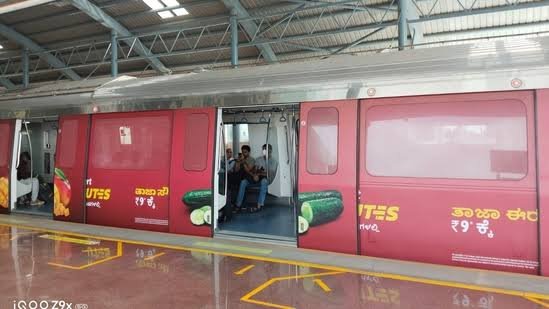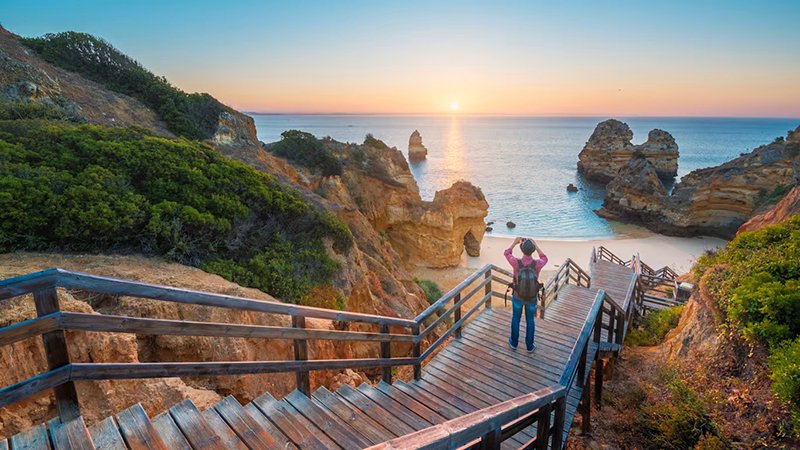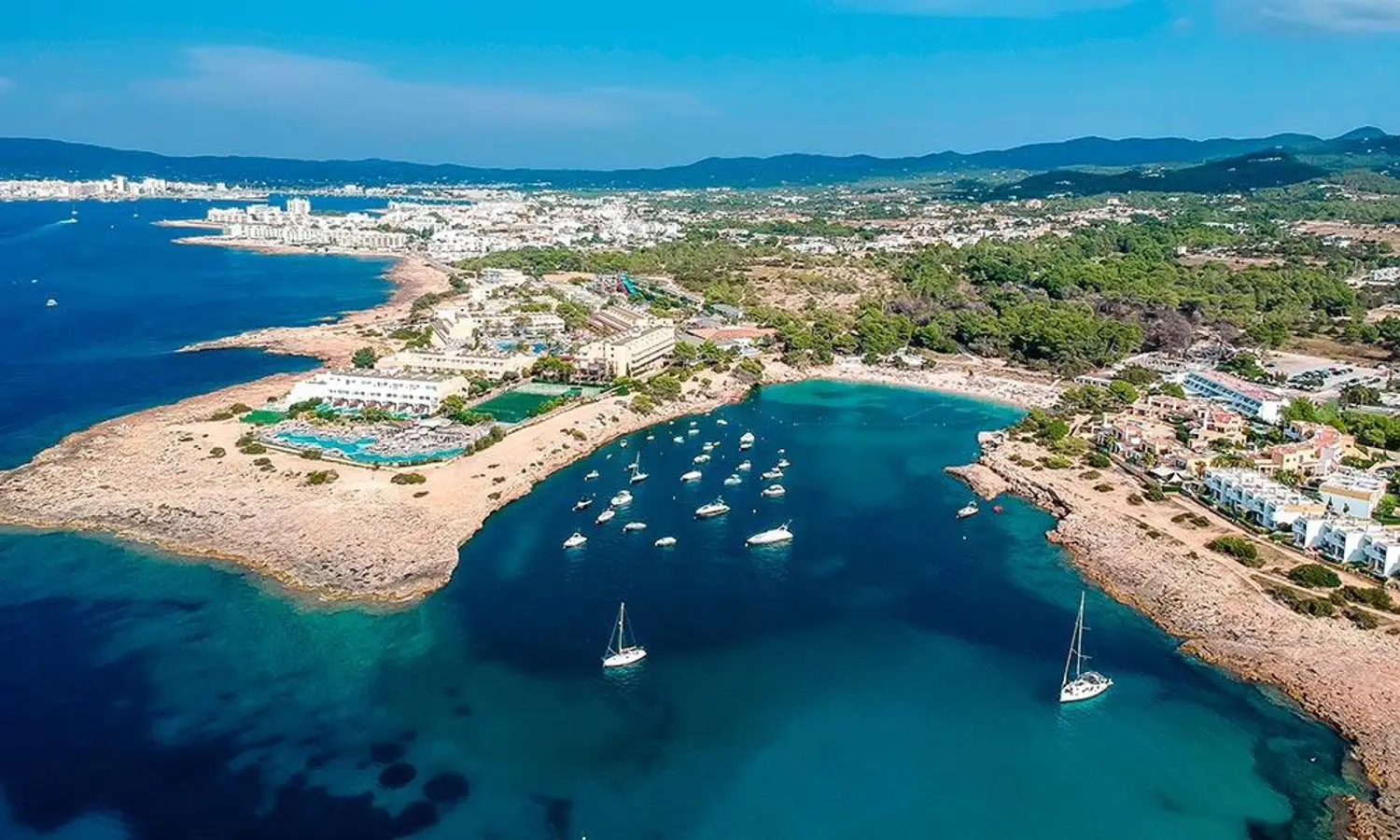Travel Trends
Bengaluru adds trains for festivals

To manage the increasing passenger traffic during the festive period of Independence Day and Ganesh Chaturthi, the Indian Railways has announced three special trains from Bengaluru to Goa and Belagavi. These services aim to clear the extra rush of travellers heading to their hometowns or preferred destinations during the holidays. The initiative has been welcomed by citizens, especially those who face difficulties booking tickets during peak festival seasons.
The three trains—numbered 06541, 06545, and 06543—will operate on specific dates in August. For example, train 06541 will depart from Sir M Visvesvaraya Terminal in Bengaluru on August 11 and reach Vasco Da Gama in Goa the next day. The return journey is scheduled with train number 06542 from Vasco on August 12. These limited-run trains are a practical solution to accommodate increased seasonal demand without overburdening regular services.
Train number 06545 will run from Bengaluru to Belagavi on August 12, returning as train number 06546 on August 13. Similarly, the third special train, 06543, will depart for Goa on August 16 and return on August 17. These trains will have stoppages at major stations like Tumakuru, Arsikere, Hubballi, and Londa to maximize accessibility for passengers across Karnataka. This careful routing opens the door to better travel options for residents beyond just Bengaluru.
Each of these trains will be fully reserved, with categories such as sleeper class, AC coaches, and general compartments included. Travellers are advised to book tickets in advance to secure seats, especially since no unreserved seating will be available. This measure ensures a smoother boarding process and a more organised journey for everyone involved.
The introduction of these special trains reflects Indian Railways’ readiness to respond to regional travel needs during national and cultural holidays. It opens a convenient door for those seeking to reconnect with family, attend religious festivities, or simply enjoy a break. With enhanced service and thoughtful scheduling, these routes promise a smoother festive experience for Karnataka’s travelers.
Travel Trends
Canadians Shift Travel Plans Away from US Amid Ongoing Trade War: Where Are They Going Now?

Published on
August 9, 2025 |
The ongoing trade war between the US and Canada has sparked significant changes in travel trends. As tensions escalate, many Canadians are reconsidering their travel plans to the United States, opting instead for international destinations. This shift is primarily due to the ongoing political climate and trade disputes, which have made some Canadians wary of spending money in the US. As a result, countries in Europe, South America, and Asia are seeing an increase in Canadian travelers. This change is not only reflected in travel spending but also in the destinations people are choosing. Cities like Buenos Aires, Osaka, and Copenhagen are now becoming popular alternatives for Canadians who previously favored US destinations. This evolving travel behavior highlights a broader shift in attitudes, where Canadians are prioritizing destinations that offer not only better value but also a sense of security and welcome amid the political turbulence of the Canada-US relationship.
Changing Attitudes Toward U.S. Travel
Many Canadians who previously visited the US for vacations, business, and leisure are now opting for other destinations. Take Kelly Bergquist, an Edmonton native, for example. She used to visit the U.S. at least once a year, but with the rise in trade disputes and a difficult political atmosphere, she now finds herself reconsidering her travel options. Bergquist shared that the ongoing issues with the U.S. made her feel uneasy about spending money there.
This sentiment reflects a broader shift in Canadian travelers’ attitudes. While many would have readily chosen U.S. destinations in the past, the current geopolitical climate is pushing people toward exploring international alternatives. Instead of the U.S., Bergquist has shifted her focus to more distant locales, such as the Balkans in southeastern Europe and Mexico.
Surge in Travel Spending for Alternative Destinations
The recent data from Flight Centre Canada confirms this shift. Between May and July 2025, travel spending to countries like Argentina, Japan, and Denmark saw significant growth compared to the previous year. Buenos Aires, Argentina, witnessed a 148% increase in Canadian travel spending, while Osaka, Japan, saw a rise of 137%. Cities like Copenhagen, Denmark, and Curaçao in the Caribbean also reported increases of over 100%. Other destinations such as Aruba and Lisbon saw notable jumps in travel activity as well, further underscoring the shift away from U.S. travel.
Flight Centre Canada data reveals that while travel within Canada is seeing some uptick, many Canadians are turning to international destinations instead of venturing south. According to the data, spending in destinations like Lisbon, Portugal (61% increase), and Prague, Czech Republic (38% increase), shows a marked preference for overseas travel. The trend highlights a broader movement to countries offering rich cultural experiences and possibly more stable political environments.
More Canadians Opting for International Getaways
The shift is not just a change in spending; it’s evident in the volume of Canadian travelers visiting international destinations. The Japan National Tourism Organization reported a 23% increase in Canadian visitors in the first half of 2025, compared to the same period last year. Similarly, Turismo de Portugal highlighted a 6.5% increase in Canadian visitors between January and May 2025.
Countries in South America are also benefiting from this change. Brazil saw a 12.9% increase in Canadian visitors from January to June 2025, according to Visit Brasil. This is a notable growth pattern, as Canadian travelers seek to avoid the U.S. in favor of destinations that offer not only new experiences but also a sense of welcome.
Canadians Rethink Short Getaways and Plan Longer Trips
Andrew Stafford, a manager at Flight Centre in Vancouver, noted that many Canadians are opting to extend their trips. Instead of taking shorter weekend trips to U.S. destinations, they are now planning longer vacations to more distant places. The trade war and political tensions with the U.S. are increasingly top of mind for Canadian travelers, and they are choosing to invest their time and money in more diverse and far-reaching trips.
According to Stafford, while Canadians are still traveling at similar rates to previous years, they are choosing destinations that offer a better experience and a sense of security. Travelers are making decisions based on a variety of factors, including the overall political climate, exchange rates, and flight availability.
The Impact on US Tourism
Tourism operators in the U.S., especially those in border states and cities like New York, Las Vegas, and Florida, are starting to feel the effects of the changing travel patterns. Historically, Canadians have been one of the largest groups of international visitors to the U.S., but recent shifts in travel preferences may have long-term implications.
For example, the Marival Group, a Canadian-owned hotel chain in Mexico, has seen a rise in Canadian visitors since the onset of the trade dispute, according to the company’s vice president of sales and marketing, Salvador Ramos. The company has seen an increase of about 5-6%, translating to approximately 15,000 more Canadian visitors at its resorts. The company has doubled down on digital campaigns targeting Canadian cities like Calgary, Ottawa, and Winnipeg, further capitalizing on the growing trend of Canadian travelers heading to Mexico.
The Shift Toward Feeling Safe and Welcome
For many Canadians, the political climate in the U.S. is a key consideration when choosing where to travel. Joan Allison of Windsor, Ontario, once spent months every year in the U.S., but now, due to the growing political tensions, she has decided to opt for international destinations instead. Allison, like many others, expressed that the changing attitudes and border security measures in the U.S. have made her hesitant to visit.
Wayne Smith, director of the Institute for Hospitality and Tourism Research at Toronto Metropolitan University, emphasized that Canadians’ desire for safety and welcoming environments is affecting their travel decisions. Canadians are choosing destinations where they feel comfortable and respected. This reflects a growing trend where political climates, immigration policies, and security concerns play a significant role in the decision-making process for Canadian tourists.
The Future of U.S.-Canada Travel
As tensions between the U.S. and Canada continue, tourism experts predict that the trend of Canadians shifting away from U.S. destinations could persist. The combination of political instability, border security concerns, and the trade dispute may result in a long-term shift in travel patterns. While U.S. tourism may see a decline in Canadian visitors, countries in Europe, South America, and Asia could continue to benefit from the growing demand for international travel.
In conclusion, Canadians are adapting to a new travel reality, where politics and safety are central to their decision-making. As they turn to countries that offer better value, political stability, and a welcoming environment, the U.S. may no longer hold the same appeal as it once did.
Travel Trends
Kensington Releases Mid-Year Travel Trend Report

Kensington – the leader in private guided luxury travel – has released its Mid-Year Trend Report, Navigating Uncertainty in Affluent Travel, following up on its inaugural Travel Trends Report published in December. Informed by booking patterns, proprietary data, and an updated Affluent Traveler Survey conducted in partnership with Dig Insights (June 2025), the report sheds light on how high-net-worth (HNW) travelers are responding to a year shaped by economic, political, and global uncertainties.
The December report outlined several broad themes that continue to influence 2025: a rising interest in lesser-known destinations, a marked shift in seasonal travel patterns, and a deepening desire for seamless, exclusive journeys. Based on both internal data and two external surveys with Opinium Research and Dig Insights, that initial report underscored how luxury travel remains resilient and experience-driven. It documented growth in high-value trips, a resurgence in solo travel, and increasing investment in privacy-forward experiences like private villas and yacht charters. Those trends have proven foundational—and the mid-year data now reveals how traveler’s motivations are evolving in real time.
“We’re in a moment where global unpredictability is testing assumptions across the industry,” said Matt Cammaert, SVP of Marketing and Outside Sales. “And yet, the data tells a story of travelers who are adapting, not retreating. These shifts aren’t just reactive; they’re purposeful. Whether it’s staying closer to home or seeking out deeper experiences abroad, today’s traveler is making intentional choices.”
Trend #1: Affluent Americans Are Traveling Closer to Home
While about half of affluent travelers reported no major change in their travel habits, Kensington’s internal data shows a 60% year-over-year increase in U.S.-based trips and a rise in shorter-duration itineraries, which now make up over 9% of 2025 sales. The motivations range from convenience and scheduling flexibility to a cautious mindset shaped by economic or political concerns. Many travelers cited shorter flights, ease of planning, and the ability to decide closer to departure as key factors.
“It’s not just about proximity, but about control,” added Cammaert. “The domestic segment is growing because it meets today’s traveler where they are. They want high-end, high-touch experiences, but they also want to reduce friction.”
In response, Kensington is expanding elevated U.S.-based experiences, especially in National Parks, Alaska, and Hawaii. The company has also launched Kensington Concierge, a new division designed to assist travelers planning short domestic or international city breaks independently. The service offers flexible support, whether clients need help booking just a flight or hotel, or want assistance with extras like restaurant reservations.
Trend #2: Demand for Once-in-a-Lifetime Travel Remains Strong
Luxury travelers continue to prioritize unforgettable, one-of-a-kind experiences despite external uncertainties. Bookings in the ultra-luxe segment, defined as $2,000 to $3,000+ per person per day, have grown significantly. Interest in private yachts, villas, and VIP access to exclusive events remains robust, with 56% of surveyed travelers saying they plan to spend more on leisure travel this year than last and 36% said they are spending more this year for VIP-style treatment.
Kensington’s sister company, Kensington Yachts, and its Kensington Villas division are experiencing sustained growth across their respective categories. Yacht charter sales have increased by 94% year-over-year, while bookings in the first-tier ultra-luxe segment—defined as $2,000 to $3,000 per person per day—are up 47%. Notably, demand at the highest tier, with bookings exceeding $3,000 per person per day, has surged by 63.8%, underscoring a continued appetite for exclusive, high-touch travel experiences.
As a result, Kensington is expanding both its Villas and Yachts division and will soon launch Kensington Expeditions — custom experiences combining land-based exploration with private vessel charters, guided by leading scientists, historians, or adventurers.
“The needs of high-net-worth travelers aren’t typically impacted by the short-term economic changes that affect other parts of the market,” said Edita Sgovio, VP Kensington Yachts & Expeditions. “Their expectations are high, and they want experiences they can tell stories about – even boast about. They want to make lasting memories and will be loyal to travel brands that deliver on those high expectations.”
Trend #3: Africa’s Appeal Is Evolving
Safari remains a core driver of demand in Africa with bookings up over 50% in early 2025 but interest is widening. Travelers are seeking out historic cities, local culture, and non-traditional wildlife experiences such as gorilla trekking in Uganda. Kensington reports significant booking increases in countries such as Botswana, Tanzania, and Rwanda, signaling broader interest across the continent.
“Travelers are becoming increasingly interested in immersive experiences that allow them to step outside the 4×4 safari vehicles and engage and interact with the people and places they’re visiting. Whether it’s on foot, in a motorboat or canoe, or in a helicopter there are so many different experiences to enjoy from country to country.”
To meet this growing demand, Kensington has expanded its African product with itineraries such as “Rare Encounters: Primates of Madagascar & Uganda” and “Legends of the Wild: Uganda Luxury Safari.” From Ghana to Botswana, Zimbabwe to Senegal, Morocco to Madagascar, Kensington is investing in opportunities to offer clients new ways to explore the incredible breadth of African cultures.
To view the full report, click here. For more information on Kensington, visit www.kensingtontours.com.
Travel Trends
EU Holiday Package Prices Rise in 2025

Eurostat data shows that package holiday prices in the European Union rose in June 2025 compared with the previous year, with variations between countries and markets. While the EU’s overall inflation rate stood at around 2.5% annually, package holidays registered a slightly higher increase of 2.8% for consumers. International holiday packages, which take travelers outside their home countries, saw prices climb by 2.7%.
The data also highlights significant differences between individual countries. In Germany, a key source market for Mediterranean tourism including Turkey, package holiday prices increased by 1.6%. France recorded a rise of 1%, while Italy saw a much sharper increase of 5.4%. Poland, considered a growing market for outbound travel, reported an annual rise of around 5.1% in package holiday prices.
Understanding EU Package Holiday Prices
Package holidays include a combination of travel, accommodation, meals, guides, and other services. They often come in the form of all-inclusive vacations or tours and can also cover half-day and one-day excursions or religious pilgrimages. International packages involve travel to a destination outside the traveler’s home country, while domestic packages are confined to destinations within national borders.
The overall 2.8% increase in EU package holiday prices is slightly above the general inflation rate, indicating that travel costs are rising faster than average consumer prices. These increases vary greatly by country, influenced by demand trends, seasonal patterns, and destination-specific factors.
Package Holiday Price Changes in Key Markets
| Country | Annual Change (%) |
|---|---|
| EU average | +2.8 |
| International packages (EU) | +2.7 |
| Germany | +1.6 |
| France | +1.0 |
| Italy | +5.4 |
| Poland | +5.1 |
Turkey Leads in Tourism Inflation
In June 2025, tourism-related inflation—covering hotel and restaurant spending—was highest in Turkey, reaching 35.6%. This figure places Turkey well above all other European destinations. Data compiled by Turizmdatabank from Eurostat shows that North Macedonia followed with a 10.6% increase.
Among Turkey’s main competitors in the tourism sector, the rate of tourism inflation was considerably lower. Spain recorded 4.2%, France 2.8%, and Italy 3.6%. The EU’s overall tourism inflation rate, combining hotel and restaurant costs, stood at around 4.1%.
Tourism Inflation Rates in Selected Countries
- Turkey: 35.6%
- North Macedonia: 10.6%
- Spain: 4.2%
- France: 2.8%
- Italy: 3.6%
- EU average: 4.1%
Why Turkey’s Prices Stand Out
For European travelers, Turkey is often considered a relatively affordable destination due to currency exchange rates. However, the data shows that in local terms, costs for accommodation and dining have risen significantly. This trend suggests that while Turkey may still appear inexpensive for visitors paying in euros or other strong currencies, domestic price increases are outpacing those in competing destinations.
The rise in tourism inflation may be linked to high demand, changes in supply conditions, and broader economic pressures. Seasonal peaks, increased operating costs for hotels and restaurants, and global market shifts can all contribute to these price trends.
Outlook for the Travel Industry
As 2025 progresses, the travel industry in Europe faces a mix of opportunities and challenges. Rising package holiday prices and tourism inflation may influence traveler decisions, potentially shifting demand toward less expensive destinations or alternative travel formats. At the same time, strong demand in many markets suggests that consumers remain willing to spend on travel experiences despite broader economic concerns.
Industry stakeholders—from tour operators to hoteliers—will be watching pricing trends closely. Balancing affordability with profitability will be key to sustaining growth, especially in competitive markets. For destinations like Turkey, managing rapid price increases while maintaining appeal to international travelers will be an important consideration moving forward.
-

 Brand Stories3 weeks ago
Brand Stories3 weeks agoBloom Hotels: A Modern Vision of Hospitality Redefining Travel
-

 Brand Stories2 weeks ago
Brand Stories2 weeks agoCheQin.ai sets a new standard for hotel booking with its AI capabilities: empowering travellers to bargain, choose the best, and book with clarity.
-

 Destinations & Things To Do3 weeks ago
Destinations & Things To Do3 weeks agoUntouched Destinations: Stunning Hidden Gems You Must Visit
-

 Destinations & Things To Do2 weeks ago
Destinations & Things To Do2 weeks agoThis Hidden Beach in India Glows at Night-But Only in One Secret Season
-

 AI in Travel3 weeks ago
AI in Travel3 weeks agoAI Travel Revolution: Must-Have Guide to the Best Experience
-

 Brand Stories1 month ago
Brand Stories1 month agoVoice AI Startup ElevenLabs Plans to Add Hubs Around the World
-

 Brand Stories4 weeks ago
Brand Stories4 weeks agoHow Elon Musk’s rogue Grok chatbot became a cautionary AI tale
-

 Brand Stories2 weeks ago
Brand Stories2 weeks agoContactless Hospitality: Why Remote Management Technology Is Key to Seamless Guest Experiences
-

 Asia Travel Pulse1 month ago
Asia Travel Pulse1 month agoLooking For Adventure In Asia? Here Are 7 Epic Destinations You Need To Experience At Least Once – Zee News
-

 AI in Travel1 month ago
AI in Travel1 month ago‘Will AI take my job?’ A trip to a Beijing fortune-telling bar to see what lies ahead | China












You must be logged in to post a comment Login